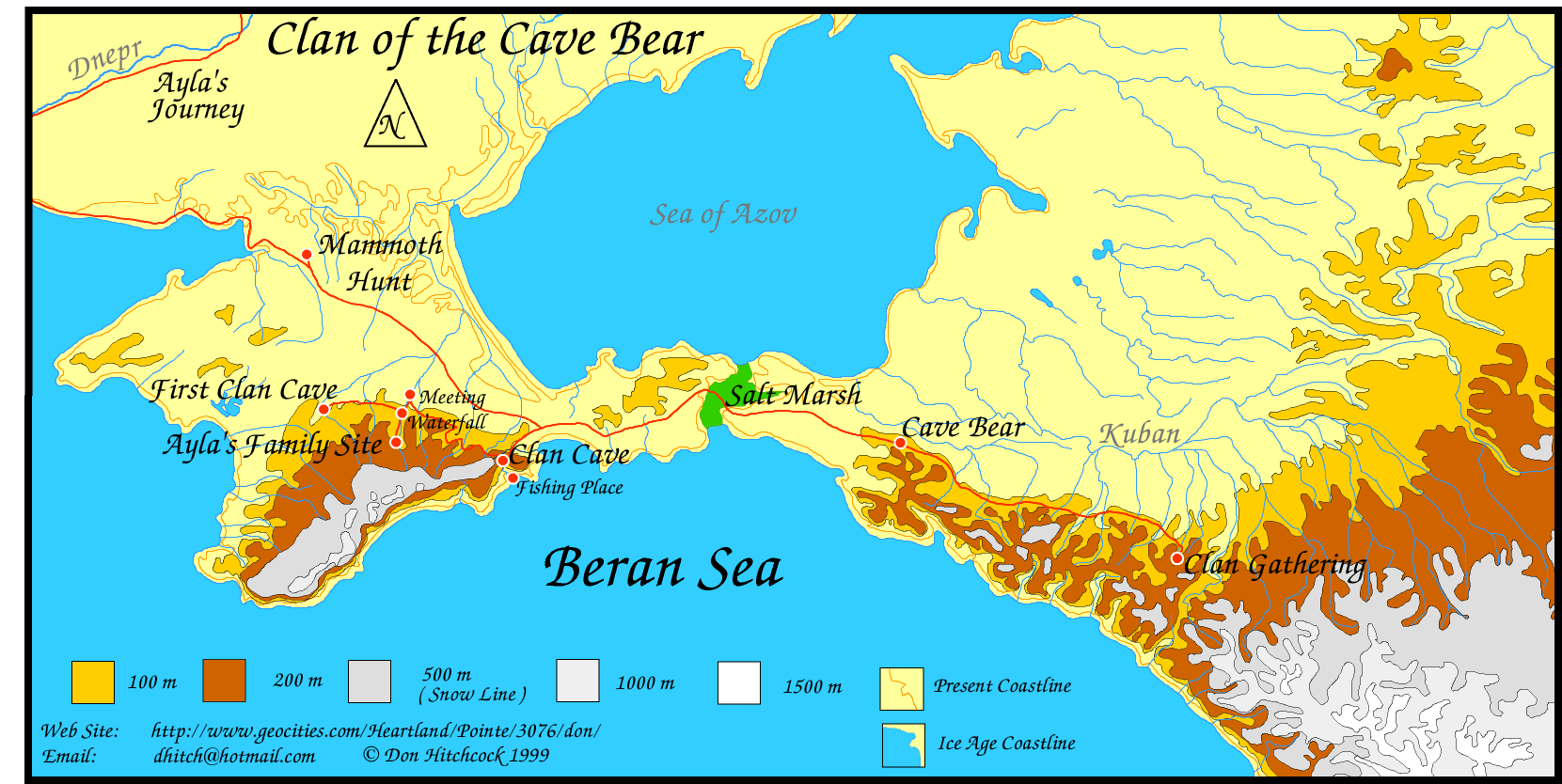The map of Ayla’s journey in *The Clan of the Cave Bear*, a novel by Jean M. Auel, is not merely a cartographic representation of her travels but rather a complex tapestry that weaves together historical context, anthropological insights, and cultural reflections. In examining this map through the lens of cultural relativism, one can uncover the deeper motivations behind Ayla’s odyssey and the broader implications it has for understanding the human condition in a prehistoric milieu.
The journey Ayla undertakes is emblematic of the struggle for identity in a world that is both foreign and familiar. As a member of the Cro-Magnon people, her existence is characterized by the interplay between survival and social belonging. The map delineates her routes through various terrains—each of which presents unique challenges and opportunities, thereby encapsulating the essence of her journey both geographically and metaphorically.
One of the most salient observations that arises from Ayla’s traversals is the inherent tension between the individual and the community. In many early human societies, the collective often dictated the norms, roles, and expectations for each member. For Ayla, her mere existence challenges the status quo, especially as she is marginalized due to her difference—being an orphan and a “stranger” in a world dominated by a clan rooted in traditionalism. This cultural divergence stirs a profound narrative reflecting the principle of cultural relativism, which posits that one must understand beliefs and practices within their own cultural contexts rather than through the lens of one’s own cultural bias.
In this context, Ayla’s map not only charts her physical movements but also her emotional and psychological shifts. Each landmark—be it a river, a mountain range, or a cave system—serves as a testament to her resilience and adaptation. These geographical markers symbolize pivotal moments in her growth, from her formative encounters with the clan she longs to be part of to the self-reliance she builds while navigating the wild. This multiplicity of experiences reflects the dynamic interplay between her heritage and her evolving self-concept, urging readers to contemplate the balance between individualism and collectivism.
Moreover, Ayla’s journey can be understood through the prism of cultural survival. The diverse terrains she traverses are rife with evolutionary significance, illustrating the adaptive challenges faced by humanity at large during the Upper Paleolithic period. The map’s depiction of natural landscapes—such as harsh winters, fertile valleys, and treacherous mountains—mirrors the unpredictability of life itself. Each environmental obstacle she confronts not only tests her physical prowess but also fosters intimate connections between her character and the broader ecological context.
Consequently, one must consider the ramifications of her explorations in relation to the interplay of culture and environment. The way Ayla learns to harness the resources of her surroundings speaks volumes about human ingenuity and the essential trait of adaptability. This aspect of her journey elucidates a crucial tenet of cultural relativism: understanding that what may appear as mere survival strategies are deeply imbued with cultural significance and identity formation.
Equally compelling is the notion of interspecies relationships, particularly between Ayla and the various fauna she encounters. Whether it be her tumultuous companionship with the wolf or her fateful meeting with the mighty Cave Bear, Ayla’s interactions with these animals extend beyond mere utility. They invite reflection on the interconnectedness of human beings and their environments, thereby suggesting that cultural identity is not exclusively anthropocentric. Instead, it embraces a broader ecological perspective, positioning Ayla as both an individual and a participant in a larger web of life.
The juxtaposition of her personal struggles and the overarching natural world propels the narrative beyond the confines of conventional storytelling. The map serves as a visual representation of this intricate tapestry, with each path Ayla travels symbolizing the complexities of personal growth against the backdrop of societal constraints. As she navigates her journeys, she engages in a form of cultural dialogue that resonates with contemporary discussions around identity, belonging, and the meaning of being human in the face of adversity.
The fascination with Ayla’s journey can therefore be traced to more than a mere narrative of survival; it speaks to the universal quest for understanding one’s place in the world. The myriad encounters she experiences compel readers to explore their own cultural perspectives and the potential biases that accompany them. Cultural relativism encourages an appreciation for the nuances that define individual narratives and the environments from which they emerge, reinforcing the idea that every journey is as much inward as it is outward.
In conclusion, the Clan of the Cave Bear map represents a multifaceted exploration of Ayla’s epic journey, revealing deeper themes of cultural relativism, identity, and survival. Each path she takes signifies not only a geographical expedition but also an inherently human quest for belonging and understanding. Through the lens of her experiences, readers are invited to contemplate the intricate relationships between culture, environment, and self, ultimately highlighting the complex tapestry of human existence that resonates across time and space.
